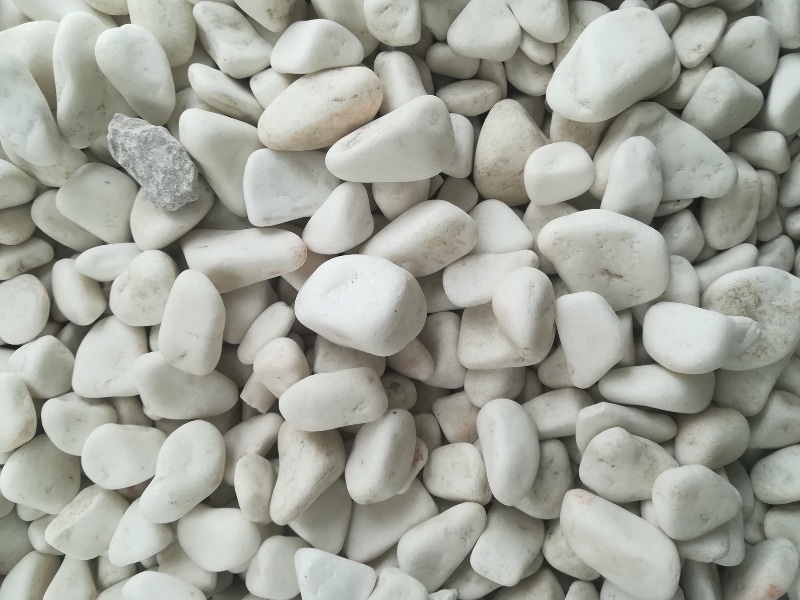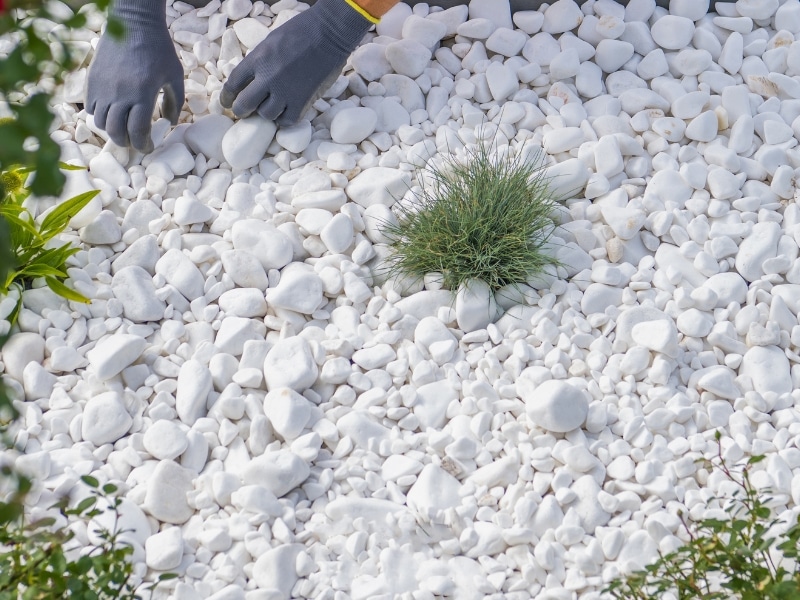Tired of battling lawn patches, vanishing mulch, or garden pests? There’s a better way to create a polished outdoor space without constant hassle. White rock landscaping offers a durable, low-maintenance alternative that delivers style and structure. It strips back garden maintenance to essentials—no endless mowing, watering, or re‑mulching. This article explains how using white rocks can reduce labour, water costs, and visual clutter while refreshing your outdoor layout with ease.
What challenges come with traditional mulch or lawn areas?
Grass and mulch may be common, but they come with hidden downsides that can catch up quickly.
- Excessive water needs: Turf often demands daily watering to avoid dry, uneven patches.
- Mulch loss in storms: Rain easily washes mulch away, exposing soil and roots.
- Concealed debris: Fallen leaves, pet waste, and pests hide under mulch layers.
- Pest attractants: Decaying mulch invites insects and fungi into your yard.
These everyday issues mount quickly. You might notice brown grass within days of dry weather or mulch disappearing after a storm. This leaves your garden uneven and adds stress to your routine. To simplify:
- Use materials like rocks that stay in place and resist weather impact.
- Opt for permanent coverage options that avoid the need for frequent topping up.
Switching to long-lasting decorative landscaping garden rock installations can eliminate most of the weekly watering and keep your garden neat through all seasons.
How do high‑maintenance plants and turf become an issue?
At first, a lush green lawn might seem ideal, but the upkeep adds up quickly.
- Ongoing mowing and trimming: Grasses grow fast and require consistent care.
- Increased pest risks: Dense turf attracts mites, fungi, and root eaters.
- Frequent treatments: You’ll need regular applications of fertiliser, herbicide, and pest control.
- Time investment: Each skipped weekend leads to more regrowth and effort.
Many homeowners don’t realise how much time and money turf consumes until routines become a habit. Overgrown areas appear within a fortnight. Moist lawns become breeding grounds, and suddenly you’re treating fungus instead of relaxing outdoors.
A better path?
- Reduce water‑hungry plants in favour of low‑care native varieties.
- Replace hard‑to‑manage turf with durable surfaces like decorative stone.
For a smooth transition, consider how professionals reduce upkeep with the correct type of landscaping that benefits your climate and soil type.
Why can neglecting proper white rock landscaping lead to problems?
White rock isn’t a set‑and‑forget solution—done poorly, it creates new headaches.
- Weeds still emerge: Without weed barrier fabric, growth continues beneath stones.
- Drainage suffers: Rocks over compacted soil can lead to pooling and erosion.
- Movement over time: Without edging, rocks migrate from their zone.
- Soil degradation: Rocks alone won’t enrich soil—nutrients diminish without balance.
A rushed job ruins the clean look you’re chasing. Rain shifts the rocks, weeds poke through, and water gathers in unexpected spots. Before long, the fix becomes another weekend chore. Instead, lock in success by:
- Using a weed membrane to stop growth from underneath.
- Installing permanent edging to prevent shifting.
- Preparing a deep, loose base for drainage support.
Selecting the best stone types for garden paving can help you set the proper foundation and avoid messy mistakes from the start.
How does white rock landscaping reduce irrigation and upkeep?
When installed correctly, white rock completely transforms maintenance routines.
- Reflective surface: Rocks bounce heat away, cooling nearby soil and roots.
- Weed suppression: They form a barrier against seed germination—no chemicals needed.
- Irrigation-free zones: Unlike mulch or turf, rocks never require watering.
- Extended durability: They won’t break down or fade over time.
Here’s how costs compare long term:
| Maintenance Task | Lawn/Mulch | White Rock Landscaping |
| Watering | Daily in warm months | Occasionally, as needed |
| Mulch replacement/year | $150–$300 | One‑off initial cost |
| Weed control | Monthly maintenance | Rare manual weed‑checking |
| Mowing/trimming | Weekly | None |
This table shows the clear, measurable savings in labour, water, and product use. You’ll gain hours back each month and reduce your environmental footprint in the process.
What visual design impact does white rock landscaping bring?
White rocks offer a standout aesthetic that instantly elevates garden style.
- Bold visual contrast: Bright white stones amplify greenery and features.
- Modern, clean finish: Their uniform look supports structured layouts.
- Texture variety: Available in pebbles, chips, and larger forms for layering.
- Pairs with many materials: Works seamlessly alongside timber, steel, and brick.
These stones mark the boundaries of gardens, pathways, and zones around features such as fire pits or seating areas. You’ll avoid the fading, rotting, and patchiness commonly associated with organic mulch while also exploring how to effectively reduce outdoor garden water use through low-maintenance, drought-friendly design choices. Some design applications include:
- Creating negative space around centrepiece plantings.
- Framing garden paths with neat, bright borders.
- Filling zones beneath benches, sculptures, or water features.
With careful placement, rocks bring structure and symmetry to your layout—a crisp edge that never dulls. For clean, garden lines that require no trimming, white rocks deliver both form and function.
How can you keep your white rock landscaping looking its best?
Ongoing care is minimal, but consistency keeps things in top shape.
- Start right: Use a durable weed barrier and secure edging from the outset.
- Annual top-ups: Replenish displaced stones every six to twelve months.
- Quick debris clearing: A leaf blower works best—no raking or digging.
- Spot inspections: Check for algae, leaf buildup, or soil exposure.
Simple habits that help:
- Sweep or blow debris weekly for that freshly‑finished look.
- Replace stones a little at a time to maintain tone and texture.
- Prune nearby plants to stop overhang or leaf fall.
- Unblock any drainage channels before significant rainfall.
These steps are quick and don’t involve fuel, fertiliser, or equipment. They’re tidy-as maintenance habits—and far easier than mowing or mulching every weekend.
Final thoughts on choosing white rock landscaping
Garden upkeep doesn’t need to be a never‑ending loop of mowing, spraying, and re‑spreading. This approach delivers a sharp, garden-like look that’s dry-weather resilient and low-maintenance. Installation success depends on weed control, edge design, and a drainage-friendly base. Once in place, it only takes a few seasonal tweaks to preserve results. See how A1 Gardening & Landscaping Sydney simplifies garden upgrades with expert setup and practical layout advice tailored for Australian soil types and weather.



